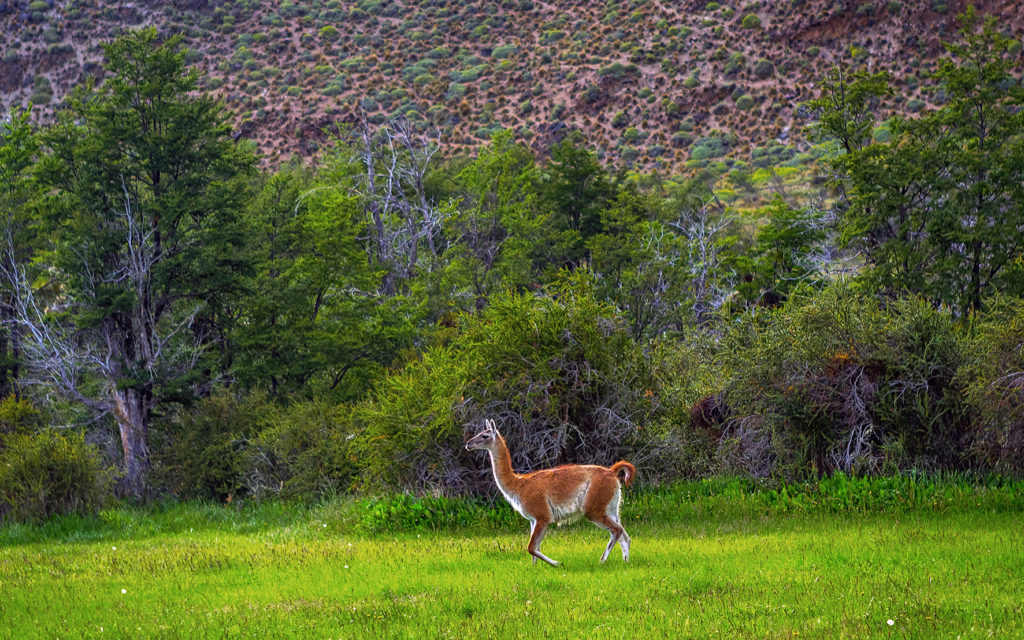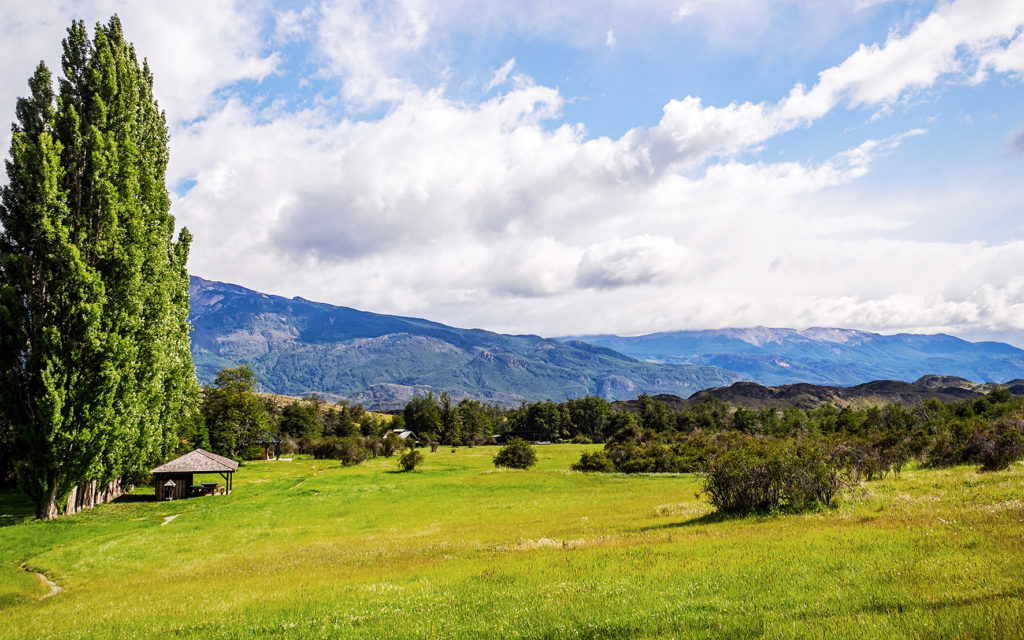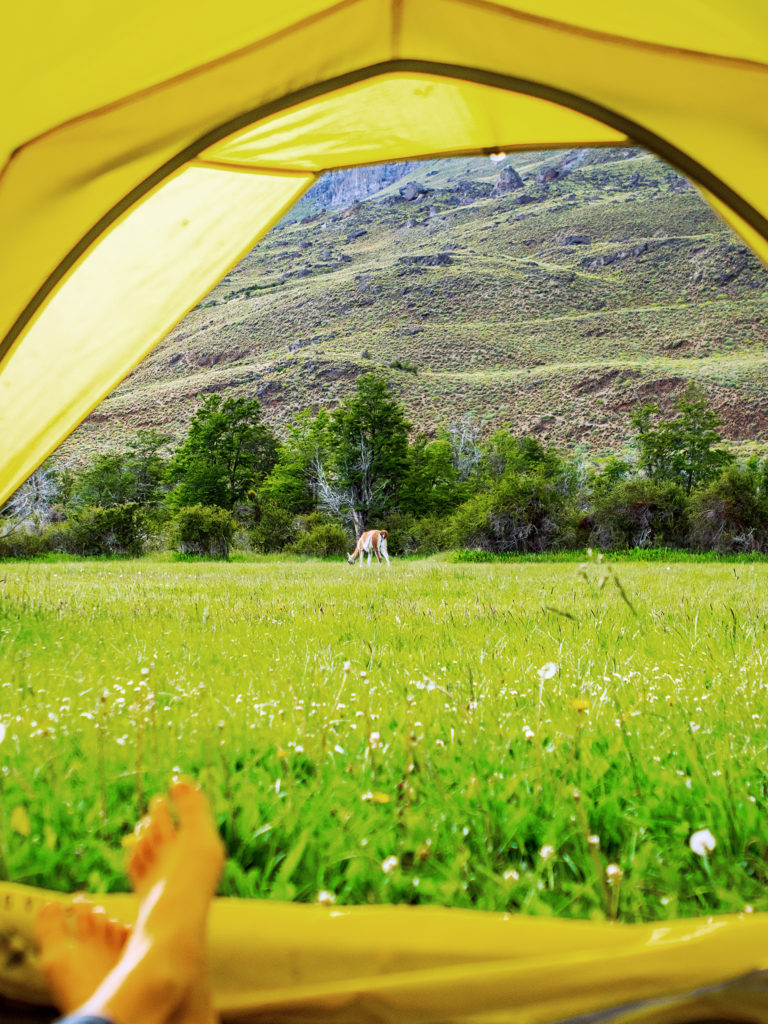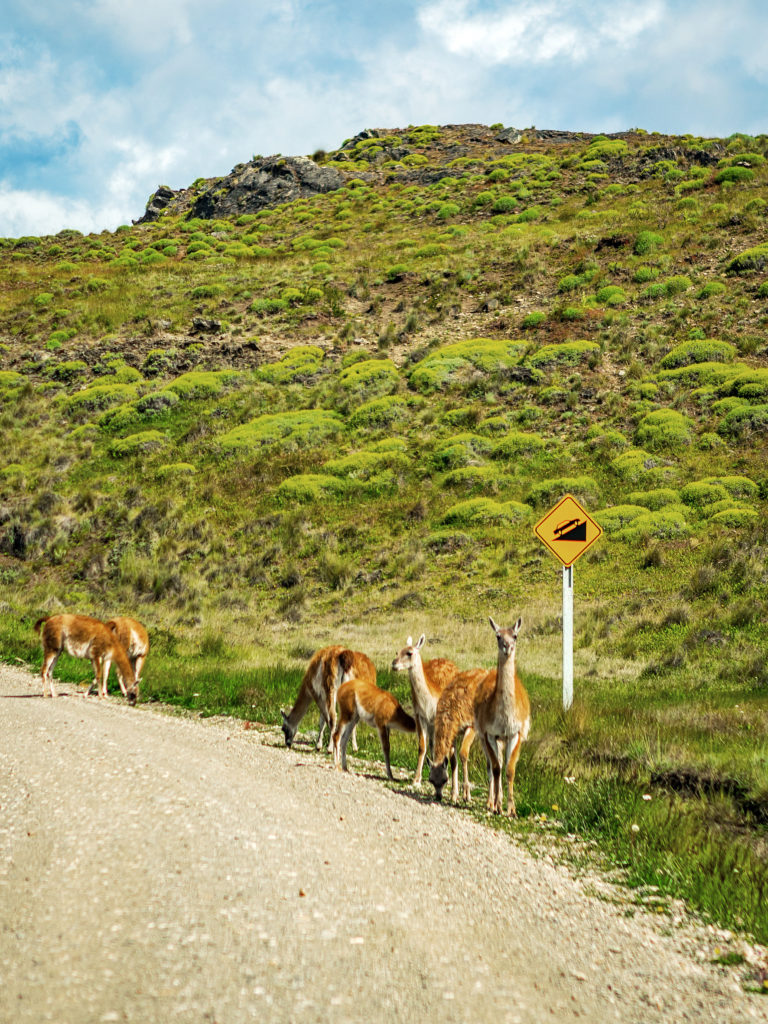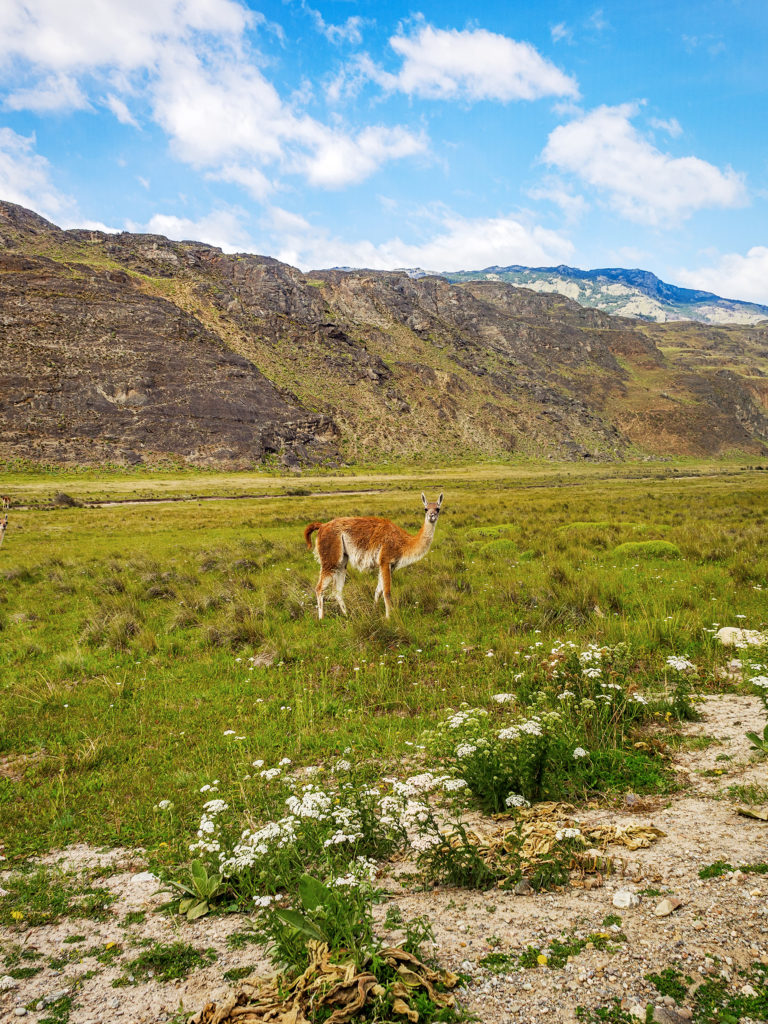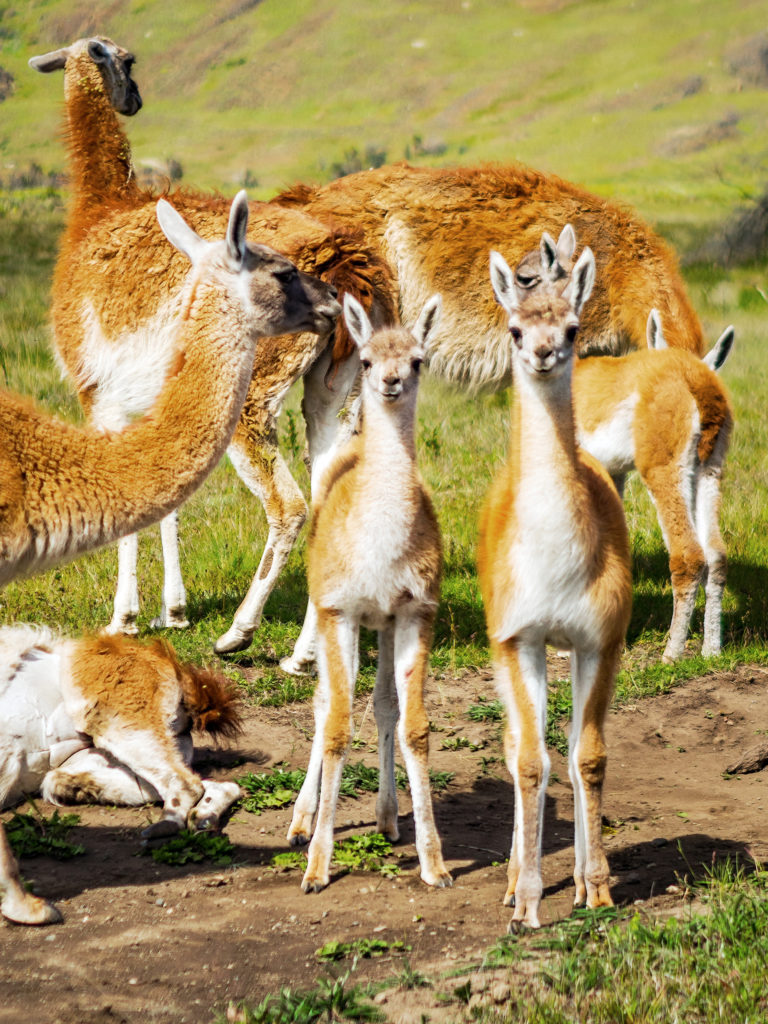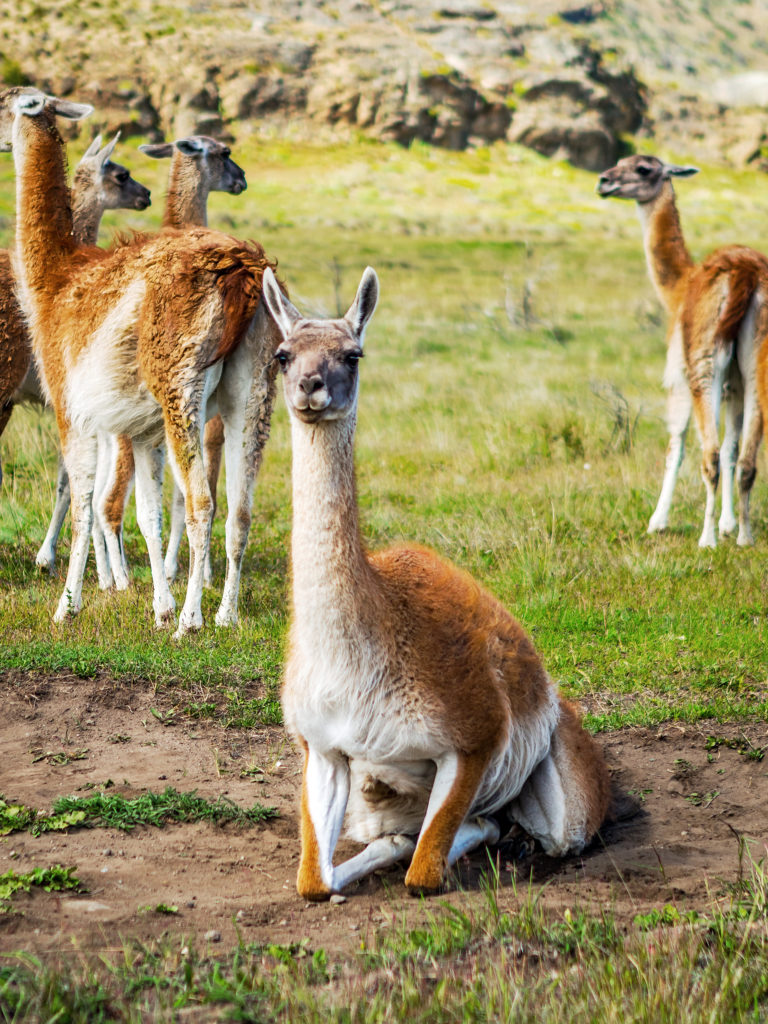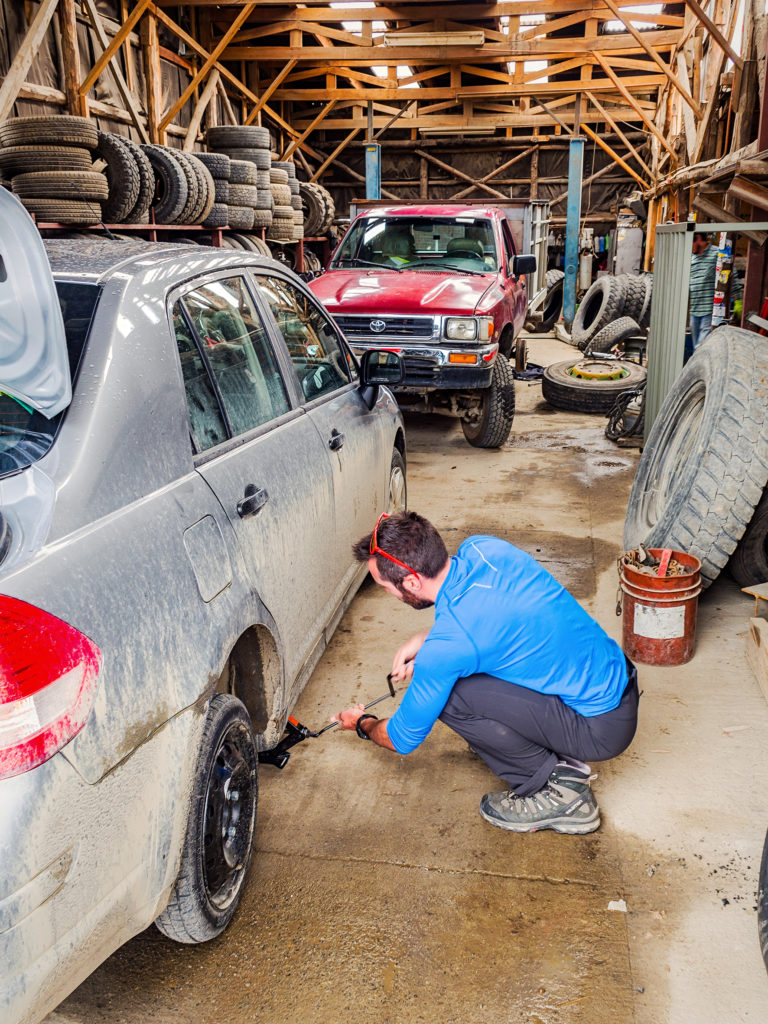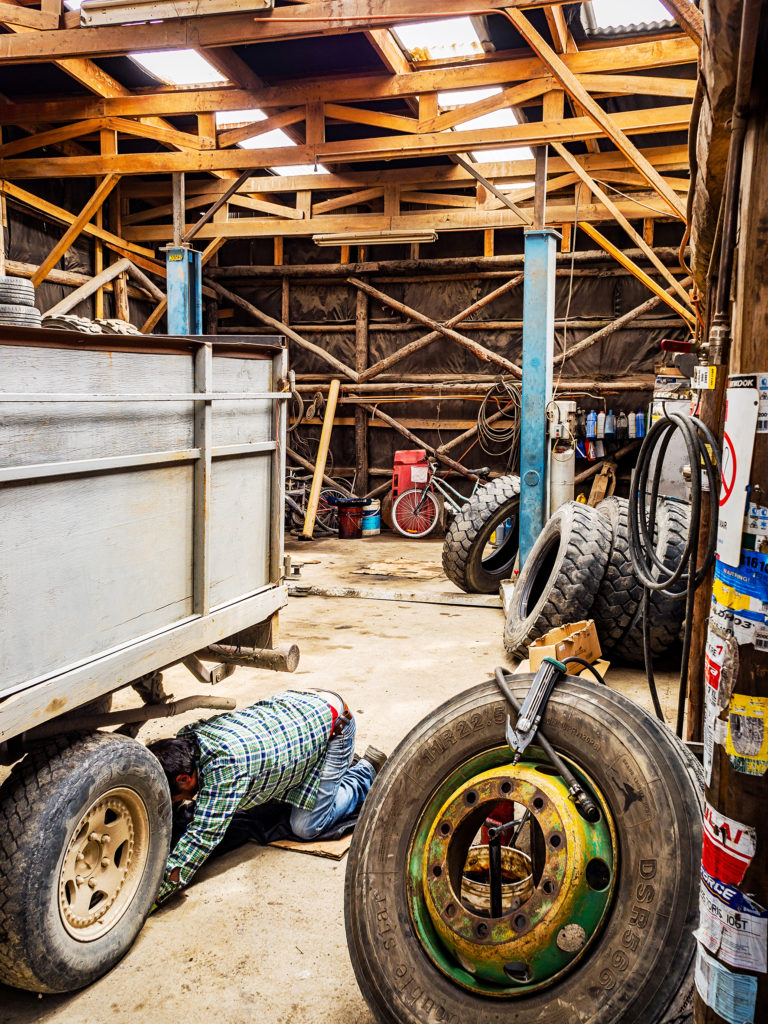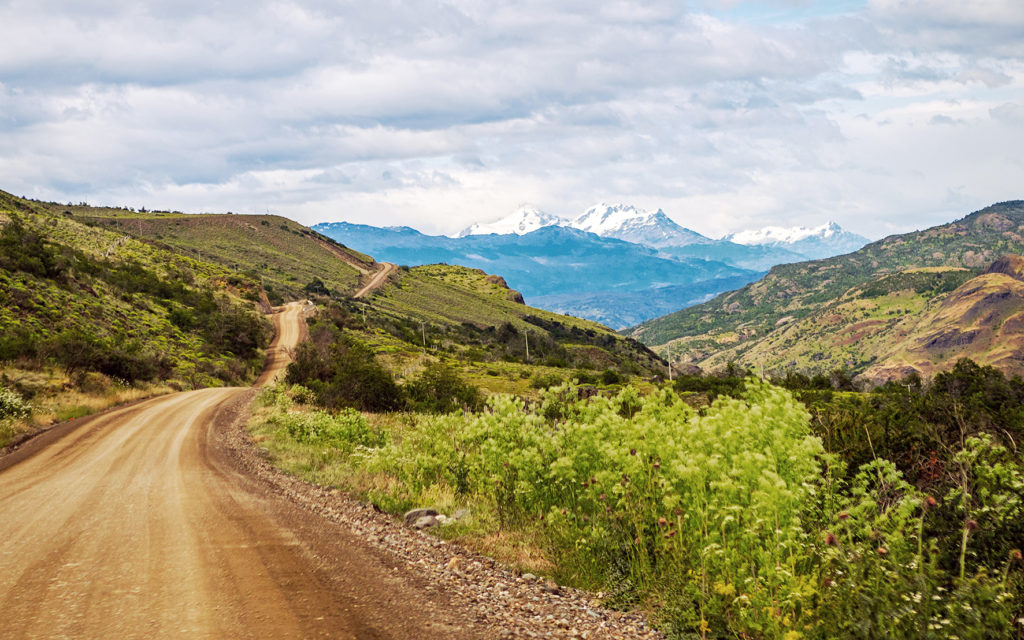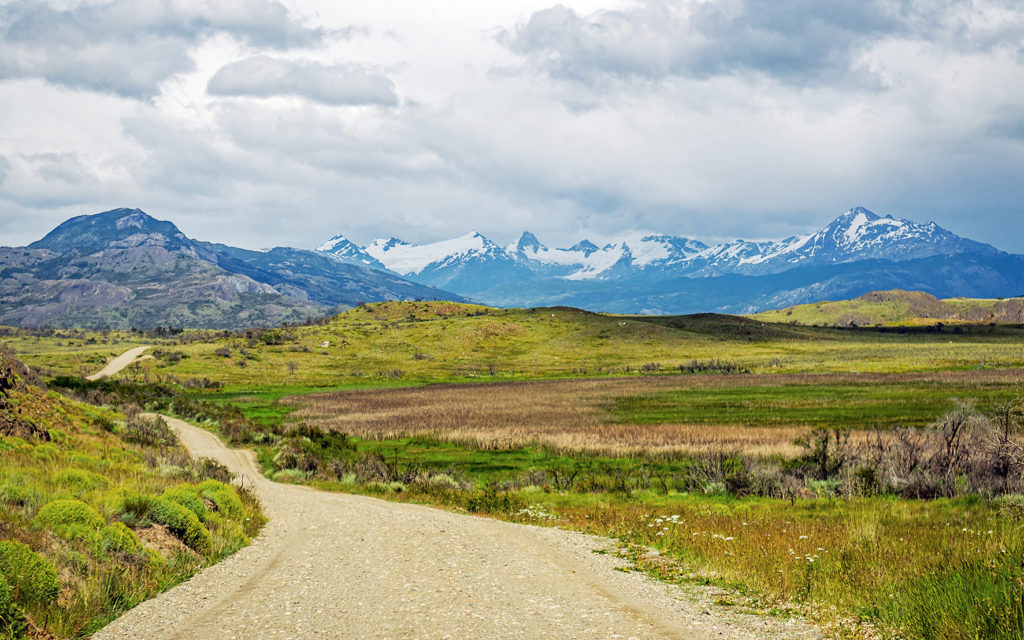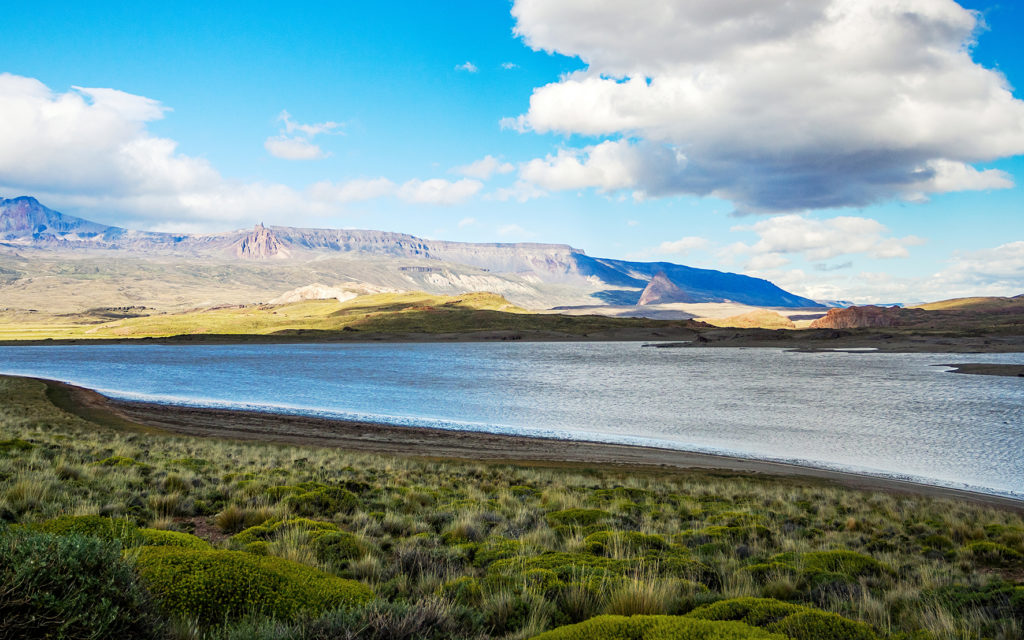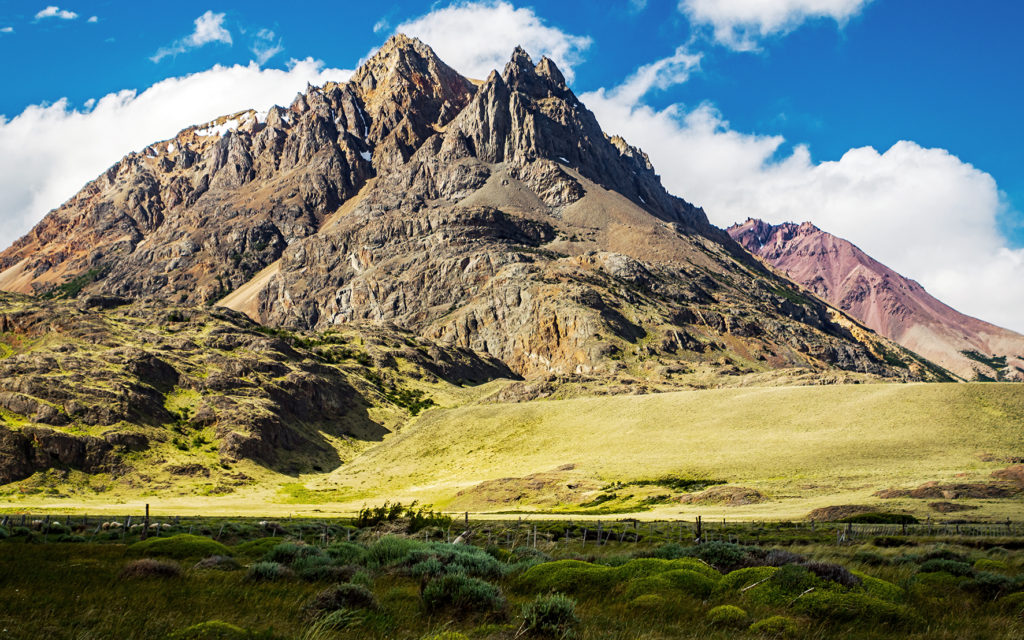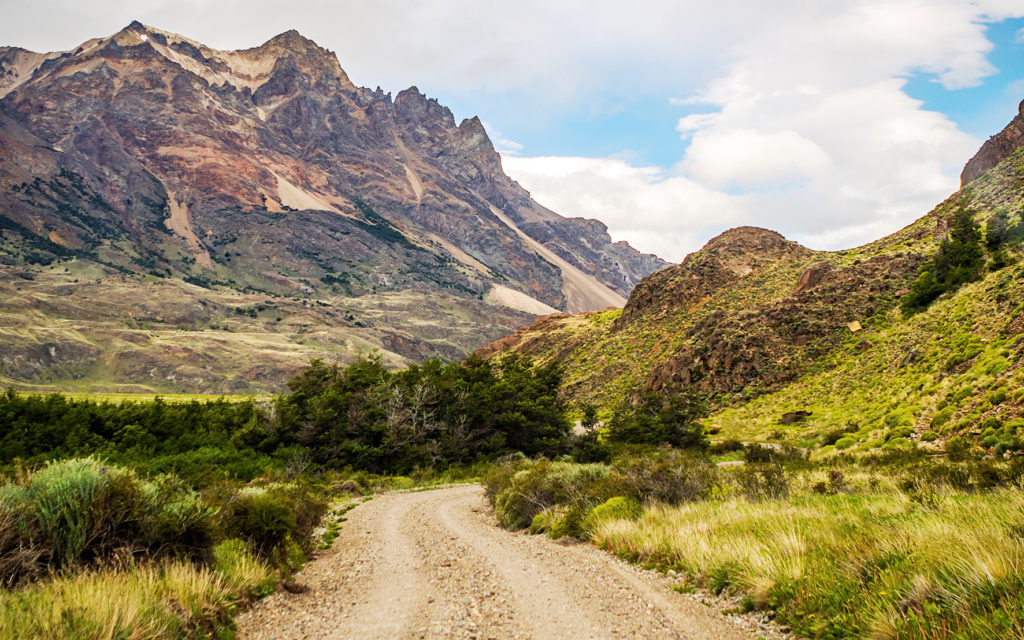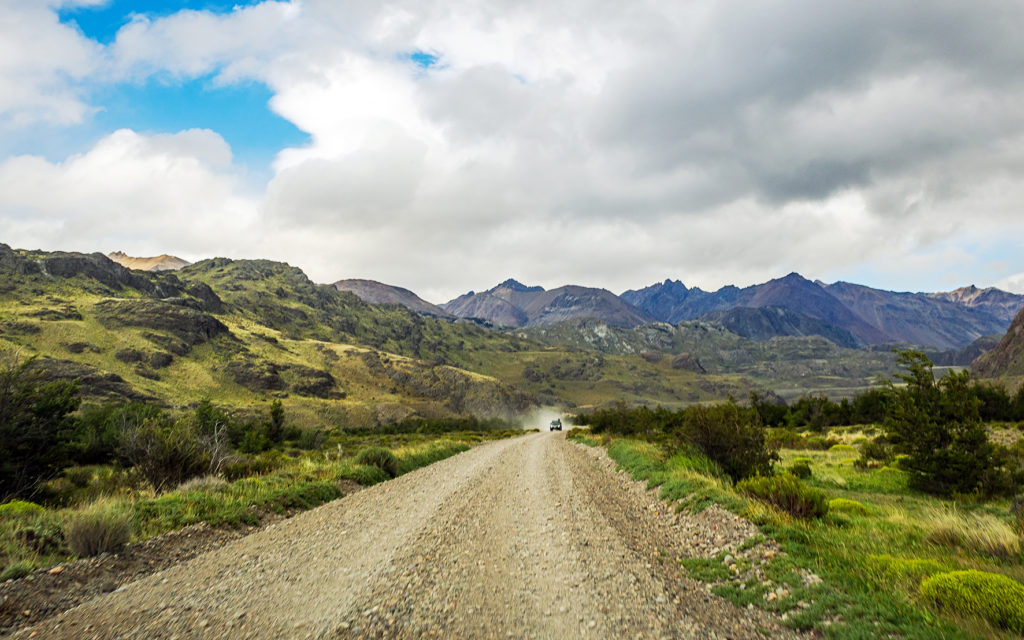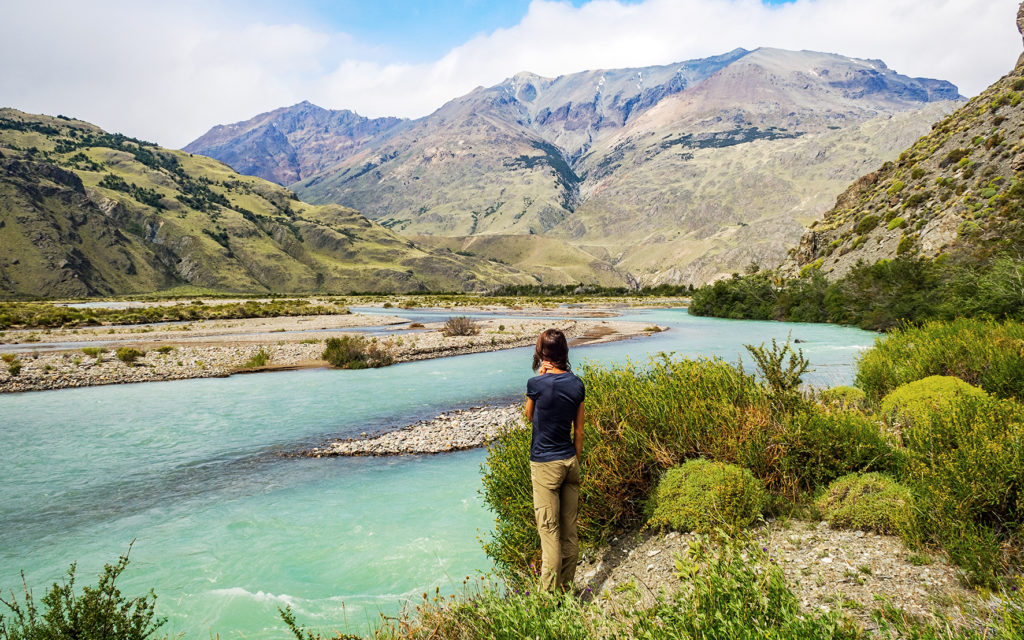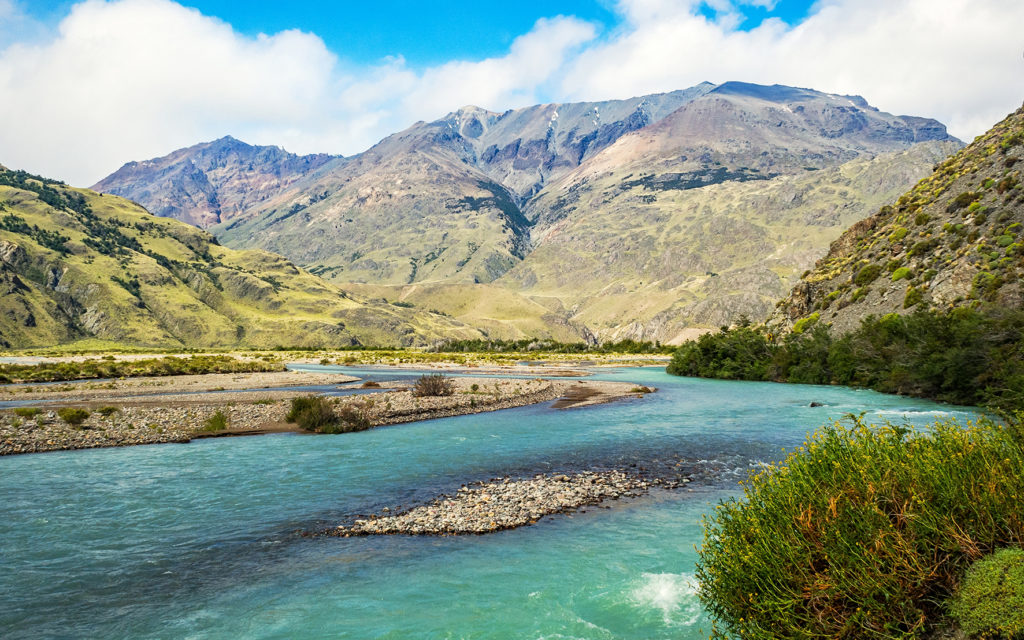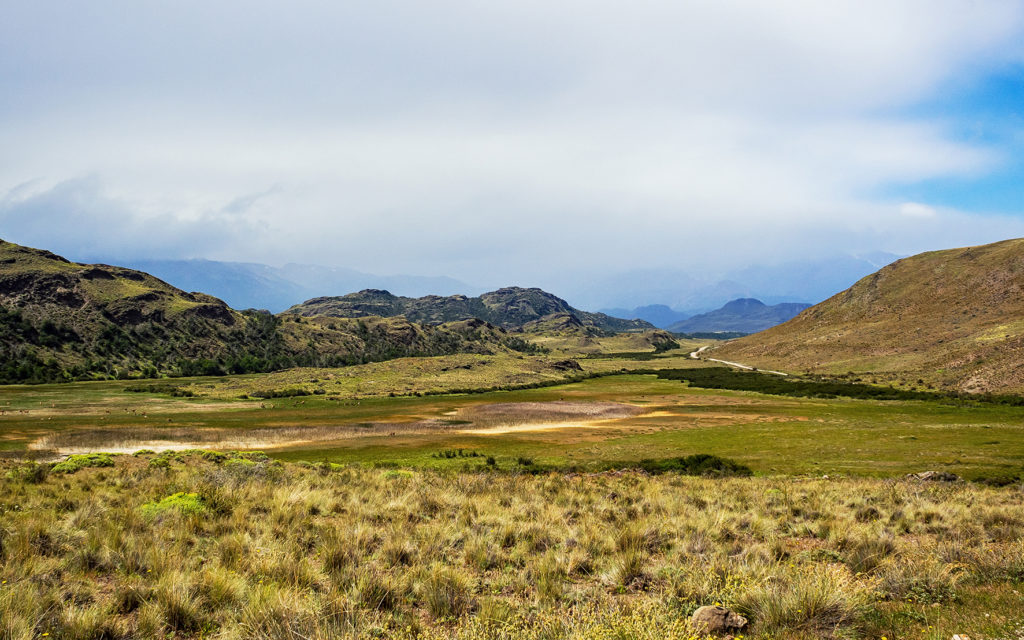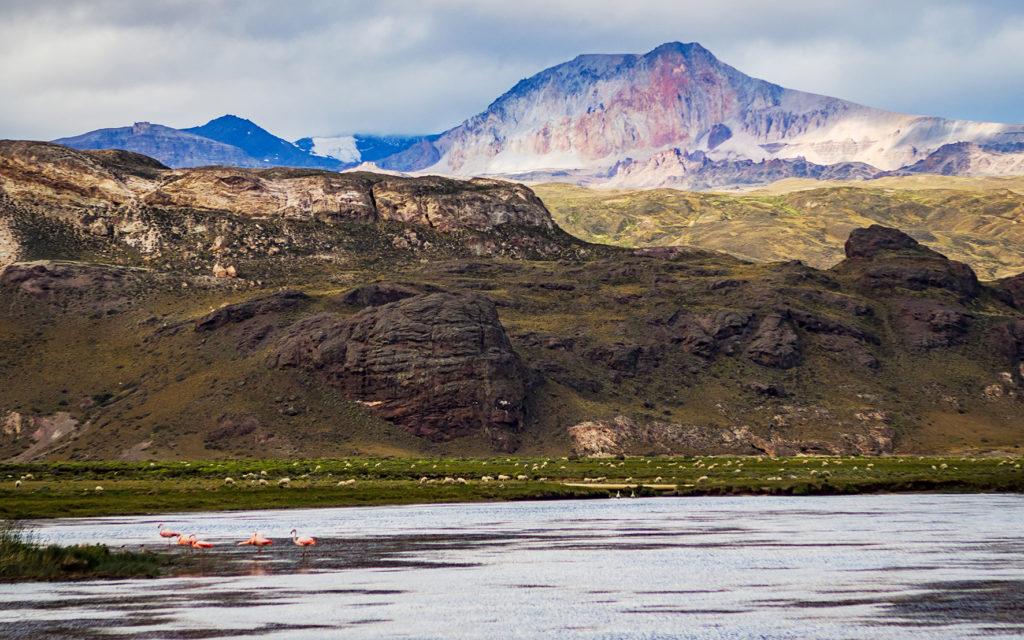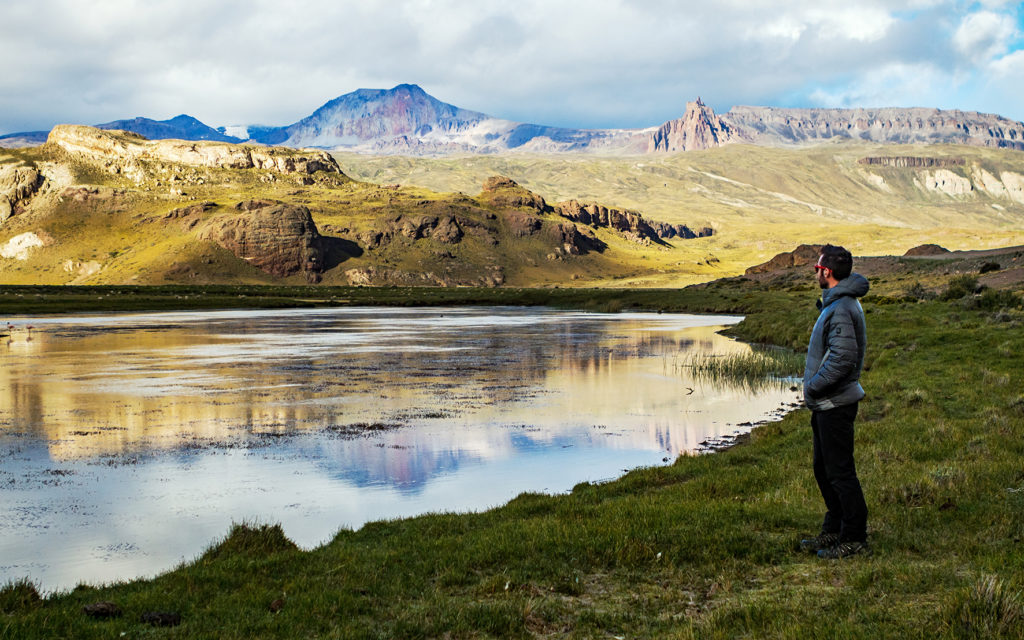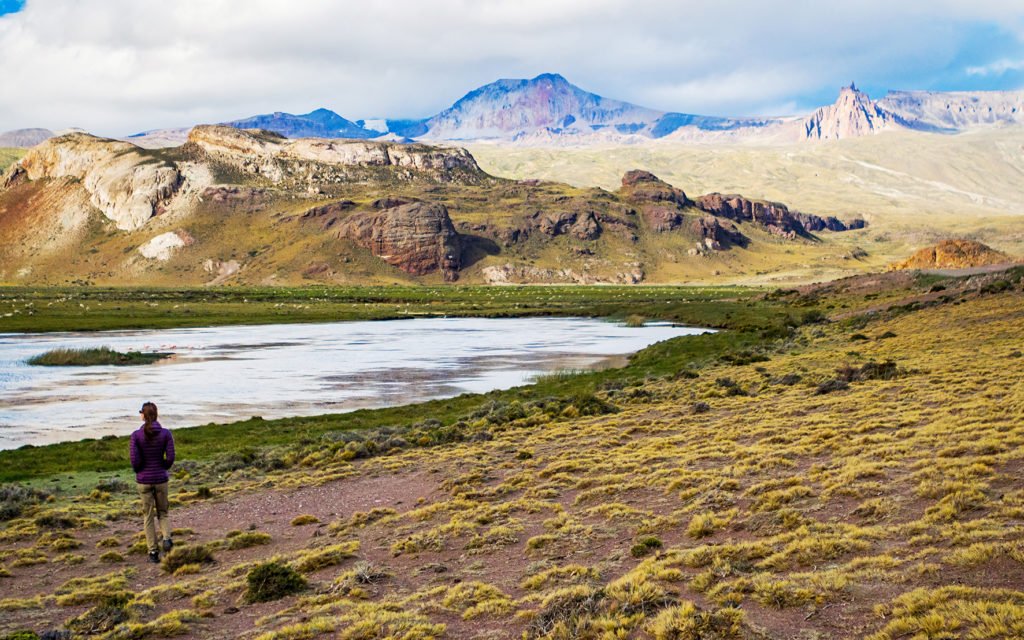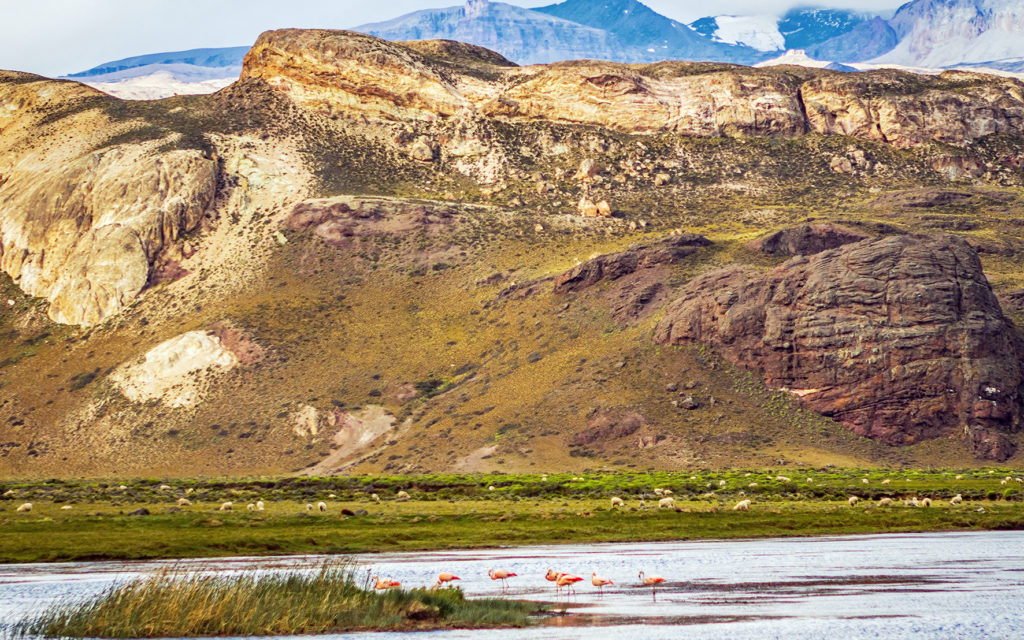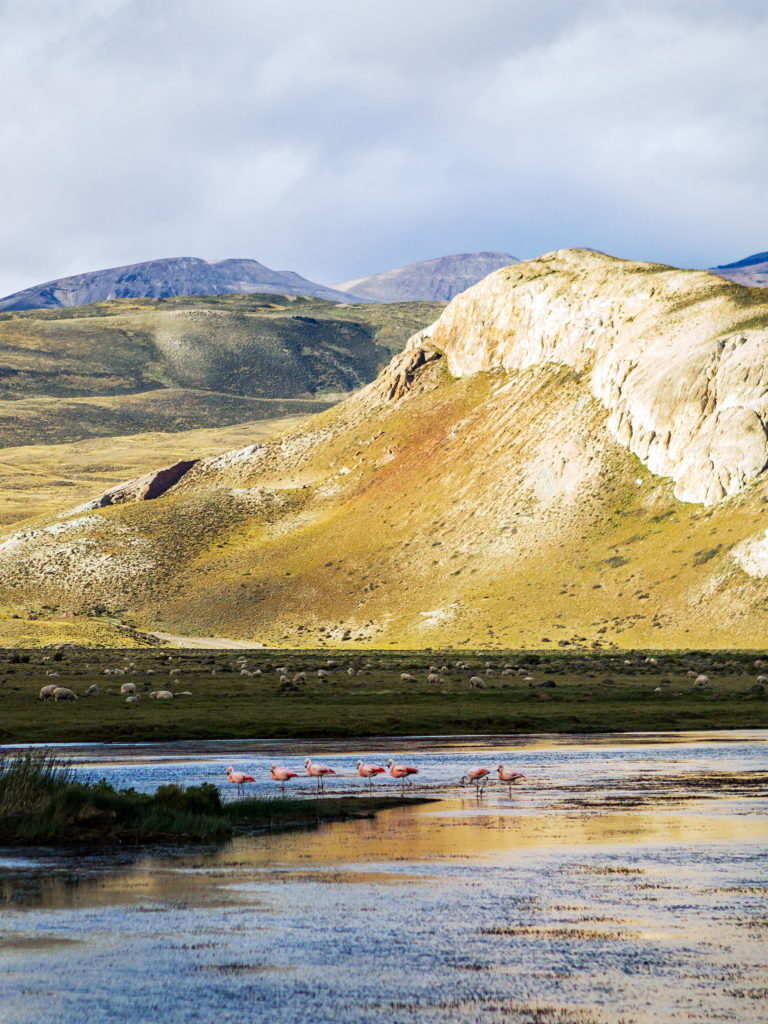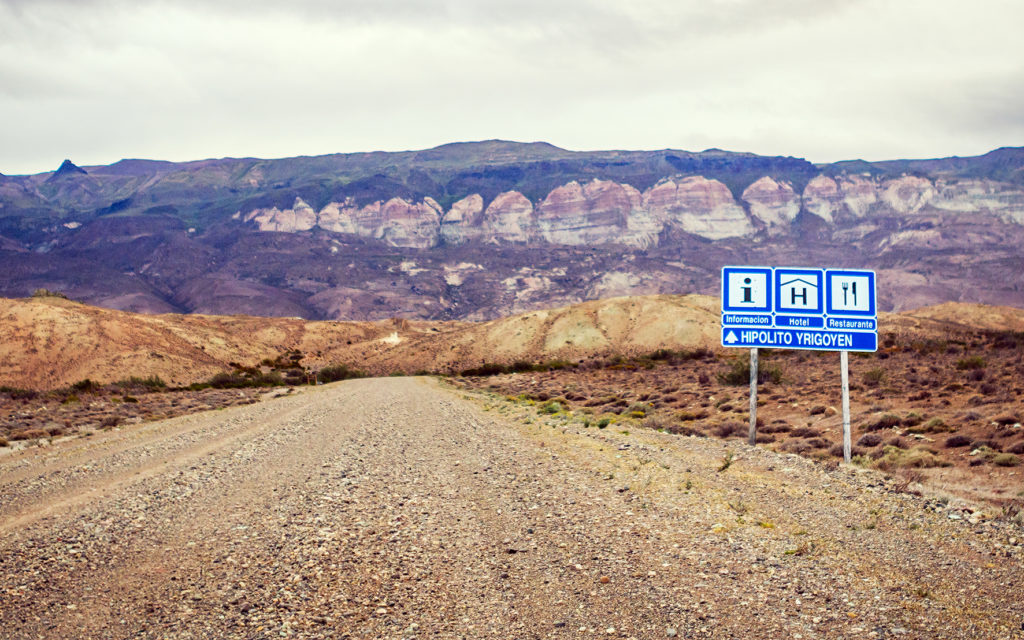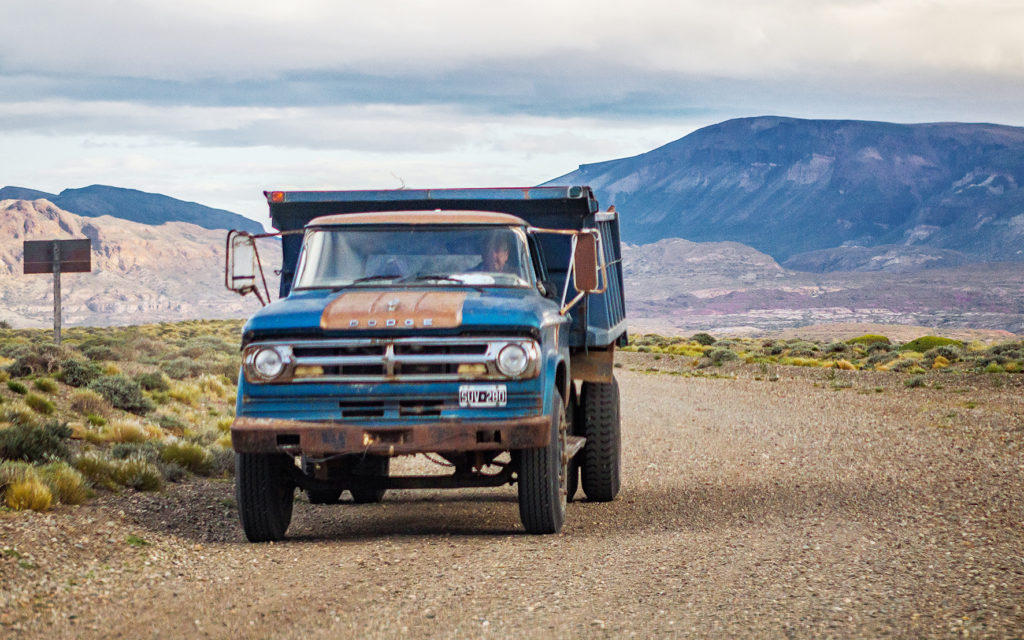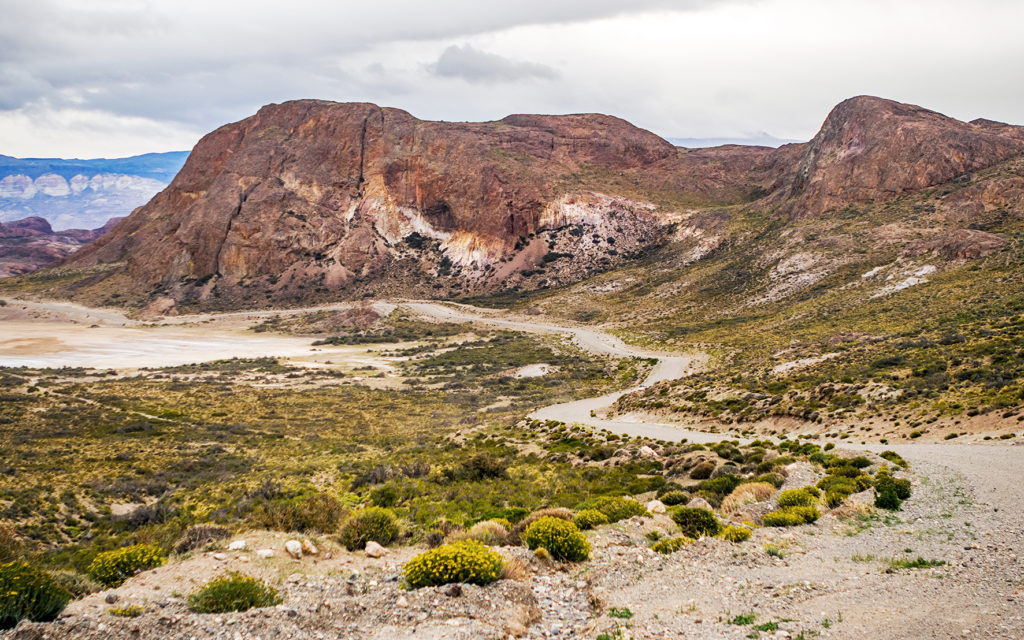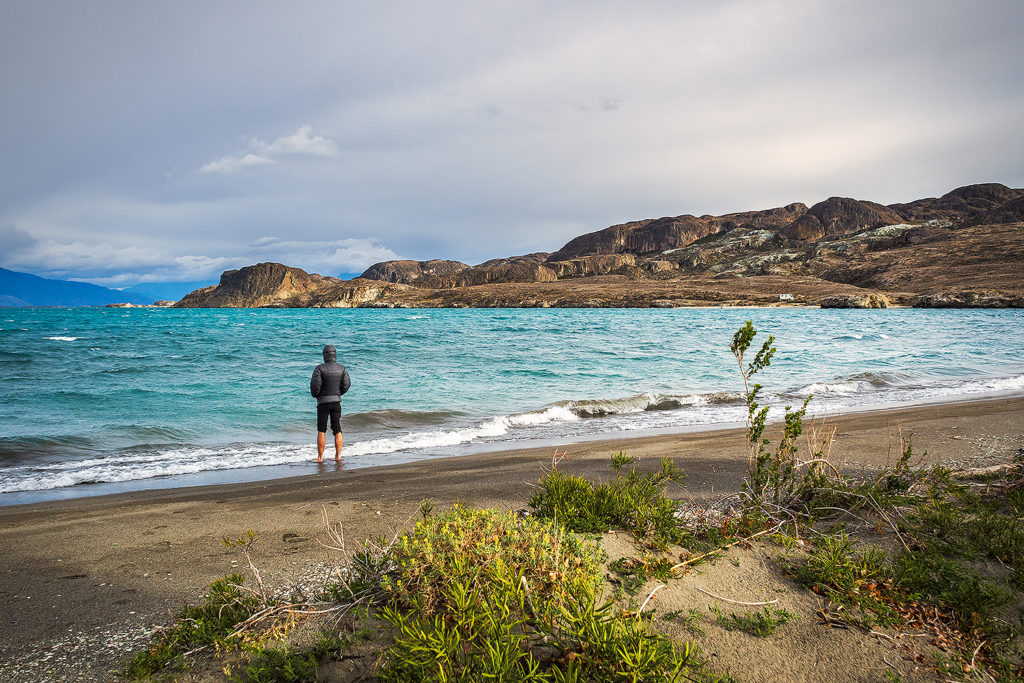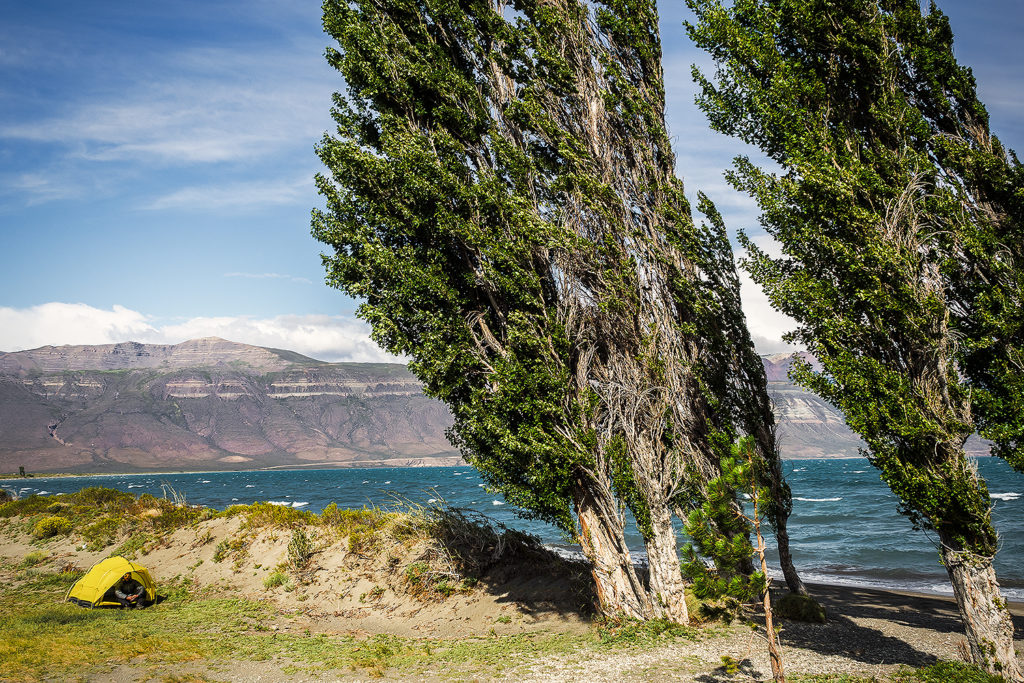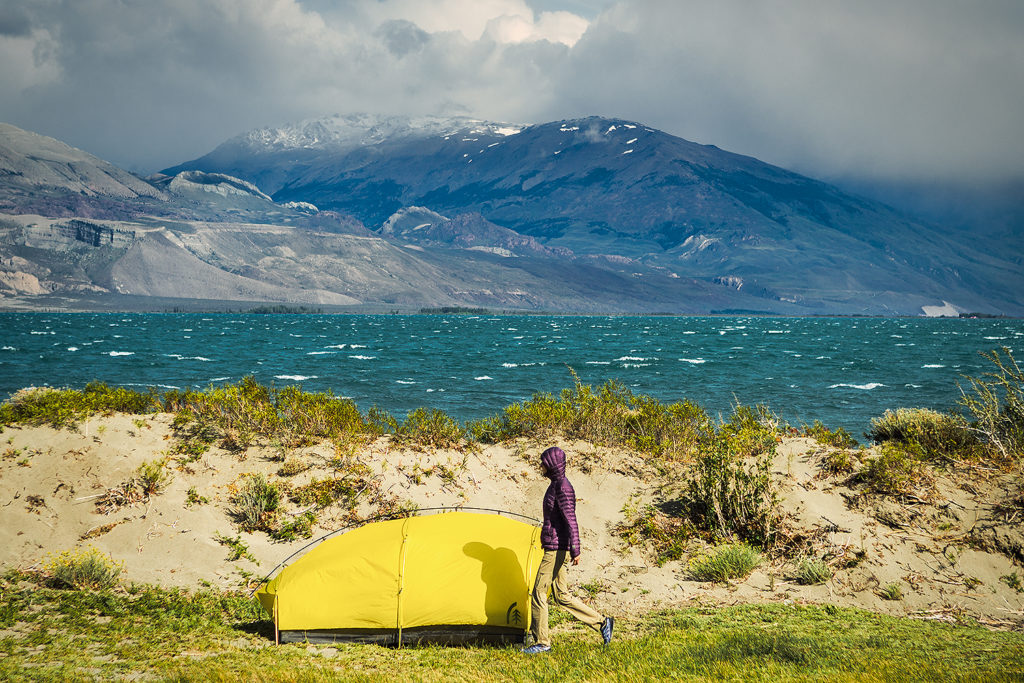On the morning of day 6, we woke up in Valle Chacabuco, to the sight of Guanacos grazing in the field.
When we got back to the car, we realized one of our tires was flat. Ironically, we found out after taking it off that it was caused by a screw, that we probably picked-up in the campground, as we drove on a path that was still under construction. So much for all that rough pot-holed and corrugated Carretera, it was a screw that gave us our first flat tire. In any case, we had to make use of the spare tire, and we also realized we were going to have to drive back about an hour to the town of Cochrane in order to get our tire changed, as it was the closest town to our current location (anything on the Argentinian side was more than 2 hours away).
So we drove back through the park and to the junction of X-83 and the Carretera, and from there headed south to reach Cochrane. Between iOverlander and the guide book, we were able to easily find a place that sold tires. Turns out the place didn’t actually install them, but they gave us direction to another shop that would change the tire for us.
Once that got taken care of, I suggested we found a place to have a proper meal rather than sandwiches. We decided to try the Centro de Comida Lago Brown. Aside from a regular restaurant menu, they offered a lunchtime “Plat du Jour” for 4000 CLP (about 6USD). That’s what we ordered and it turned out to be one of the best meals we’ve had during our trip (aside from all the amazing food prepared for us at Chakra Lodge in Costa Rica). The dish was really simple, mashed potatoes with chicken breast in a buttery herb sauce. But it tasted like our grandmas had made it. The potatoes were super flavorful and the chicken incredibly tender, as it would be after, we assumed, roaming around in one of the local backyards. Somehow the dish had, there again, a taste of childhood…
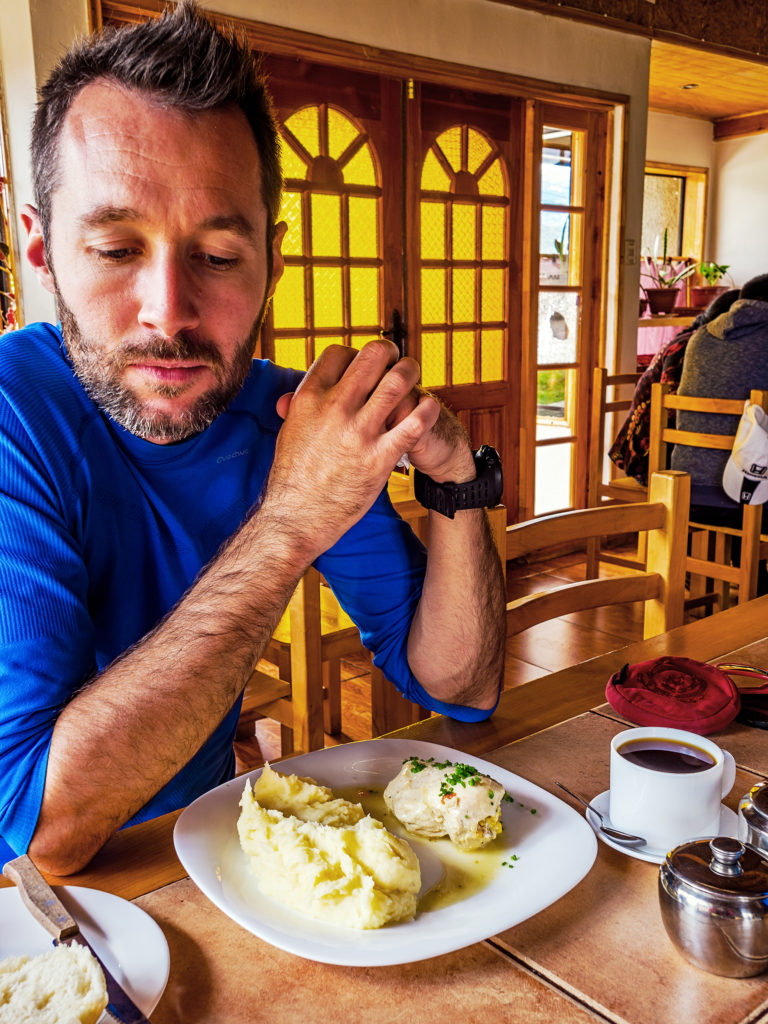
Since we were in a somewhat bigger town, with potential access to internet, there was one thing I wanted to check before crossing the border. I had read that Canadian residents had to pay a reciprocity fee upon entering Argentina. The fee had to be paid online and the receipt printed to be presented at the border. We hadn’t really worried about it until now, but since we already had to take a detour because of the flat tire, I didn’t want to drive all the way to the border, only to be turned away because of paperwork, and having to drive all the way back to Cochrane again.
So first we walked into a small hotel to see if they would let us use their internet. They say they didn’t have any, but there was an internet café just a couple of blocks away. There were two or three computers available, but the woman at the desk asked if she could be of any help, so we showed her all the paperwork we had for the car, and asked if she knew if we needed anything else. Aside from the reciprocity fee, she said we were missing an international insurance for the vehicle – the one we had was for Chile only. It was actually really easy to purchase, and she was able to get one online for us for about 15,000 CLP – the printing of the paper actually took forever as her computer was old and she wasn’t able to open the pdf file. There was a very frustrating period of about 20 minutes where I watched her try to repeatedly open the file and fail, download the latest version of Adobe Reader and try to install it and fail, then try to open the file again, then try to install reader again…that took place about 4 times until eventually she got on the phone with the insurance company and they emailed her the insurance certificate in some other format that she was able to print for us. Then we paid online for the reciprocity fee (78 USD), printed the receipts and finally were on our way.
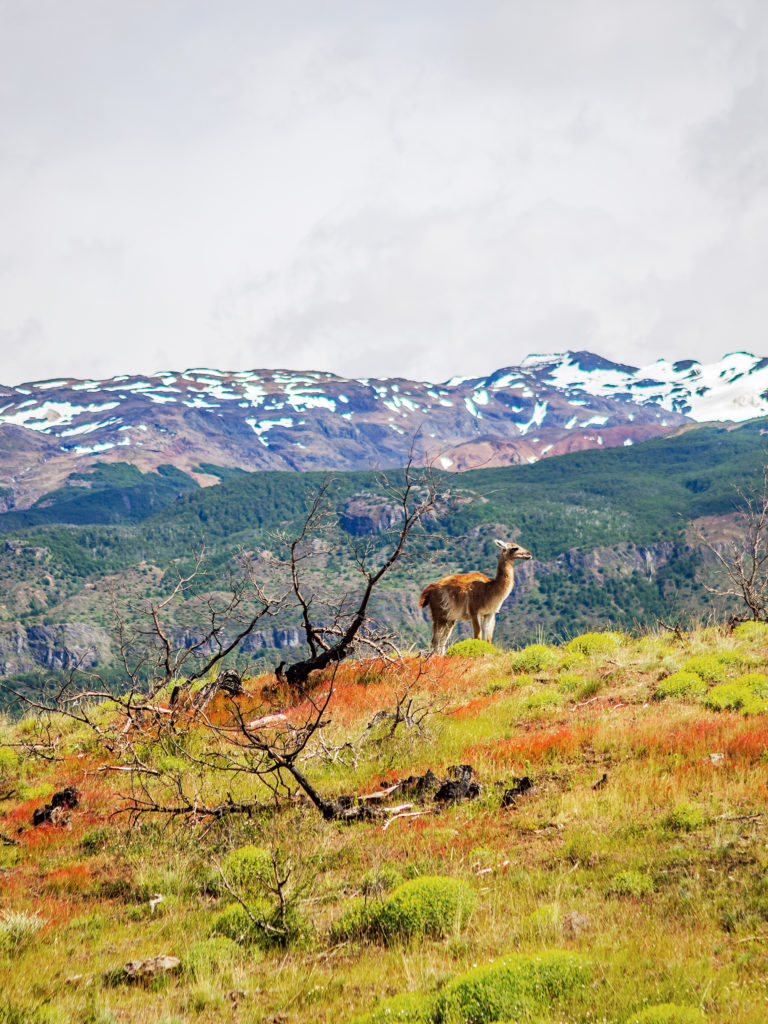
We headed back to Chacabuco park and after driving through the reserve on some of the roughest stretch of road we had seen so far, we eventually made it to the Paso Roballos border crossing. We first had to go through the Chilean Exit office. Pretty much in the middle of nowhere, the border office was small, and the border officer welcomed us in by shaking both our hands – quite a different experience from our usual US/Canada crossing. We gave him all our paperwork, including the car’s. After taking a look at it, he pulled out a form, and placed it on top of a piece of carbon paper, with another copy of the form below it (did I mention that this whole country felt like the 80’s?) Then he handed us the stack and asked us to fill out the information. The documents that we had been provided with by our car rental guy worked perfectly, especially the notarized authorization to take the car outside of the country.
After taking care of all the paperwork, we drove about 13km in dry and windy no-man’s land.
Then we arrived at the Argentinian border. We thought the office on the Chilean side was small, but that was before we saw this one.
We entered a small wooden building and then it wasn’t even the 80’s anymore, it was the 50’s. The friendly border officer was wearing a military green uniform made of thick canvas fabric. A wooden chest of drawers in the back corner was bursting with notebooks and forms. He sat behind a small wooden desk right in the middle of the room, pulled out a pen from a pencil case and a large notebook with lined pages from a drawer, and then proceeded to write down our name and passport numbers into his register. There were more carbon-papered forms to sign but the whole process took less than 5 minutes.
The officer asked if we were carrying any food and when we showed him the content of our food bag, he didn’t ask us to remove anything (we had a bit of cheese left, but no fruit or vegetable, mainly canned food). Seeing that we had some firewood in the trunk, he did give us a warning about making camp fires, and being very careful about preventing wild fires. In this dry and windy area of Patagonia, human-caused wild fires were one of the highest threats to the bio-diversity. With that he wished us a good trip and sent us on our way.
And then we were in Argentina.

From the border, the nearest towns were Lago Posadas, about 70km south or Bajo Caracoles, 100km East. Lago Posadas was a detour as we had to drive through Bajo Caracoles anyway to get to Ruta 40, the main North/South road in this part of Argentina (the Argentinian equivalent of the Carretera Austral). But it was getting a bit late so we decided to go to the closest one, even if it meant adding more distance to our trip the next day.
When planning for this trip, I had done some pretty extensive research about the Carretera Austral. I knew to expect the rough roads and the remoteness. Once we got there, we quickly realized that even if the towns were small, and nature was everywhere, there was always some trace of human presence, familiar and inviting…On the other hand, I had paid little to no attention to the Argentinian portion of our trip, other than noticing on the map that Ruta 40 was a long stretch of road that seemed to spread in the middle of nothing.
The first 20 km after the border felt like we were driving on Mars. After the greens and blues of Chile’s vegetation and lakes, we found ourselves in a dry and dusty canyon, landscapes in shades of red and brown as far as the eye could see. And isolation here was of a whole different scale. Along the 70km of road to Lago Posadas, we saw a total of three vehicles (2 cars and one guy on a motorbike). All of them actually stopped to ask where we were headed, making sure we knew where we were going and that we weren’t just lost in the desert. Although that environment felt all of a sudden much harsher and a lot less inviting, it was also a nice surprise to be experiencing remoteness at a whole new level…
30 min after the border we came to the first intersection in the road, facing an imposing mountain range in front of us. We turned right on route 39, heading to our destination for the night.
Planted in the middle of the windy desert and surrounded by low, brown mountains, the town of Lago Posadas felt like a little oasis. The road leading up to the arched entrance was lined with tall poplar-like trees, providing both a nice pop of green along with some wind protection. Once again, following the directions from iOverlander, we drove through the town and all the way to the lake, and found a spot to set up camp for the night.
Battered by the wind, the lake felt almost out of place, with its incredible shades of blue popping out amongst sand dunes and grey mountains. We set our tent behind the cover of the sand dune. No fire for us tonight in those conditions, which we were fine with. At this point, it was 10pm before the sun showed any intention of hiding below the horizon. This was probably the most remote camping we had ever done – in Patagonia or anywhere else.


